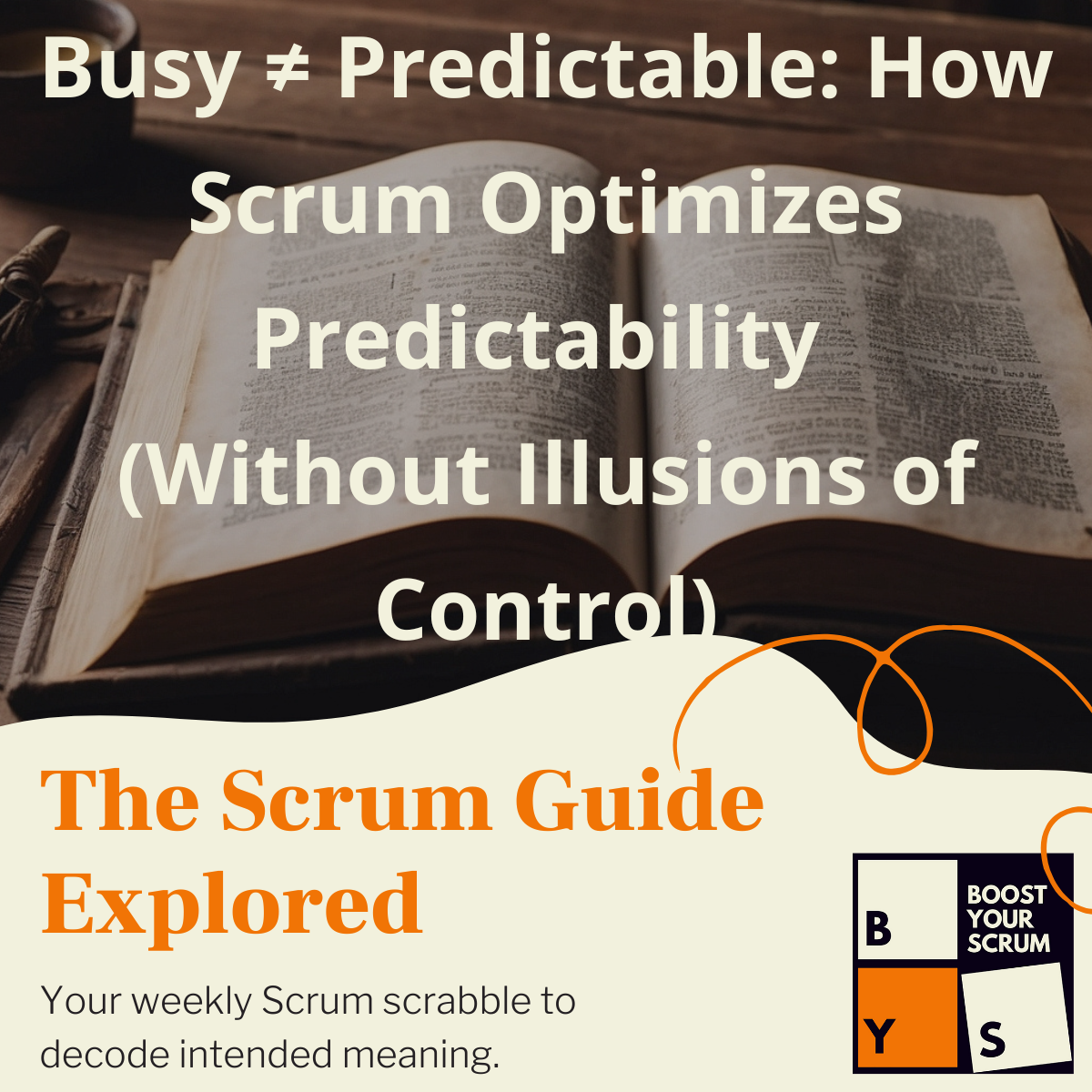Busy doesn’t equal predictable. Many teams deliver a lot—but few can be counted on to deliver value predictably.
From the Scrum Guide: *“… to optimize predictability and …”*
From Cambridge Dictionary:
- Optimize: “to make something as good or effective as possible.”
- Predictability: “the state of knowing what something is like, when something will happen.”
So what are we really trying to predict with Scrum?
Not story points. Not hours burned.
But
- the viability of our product (can it meet expectations?),
- its desirability (will people want it and use it?), and
- its achievability (can we build it?).
Anchors for this are the Product Goal, Sprint Goal, and Definition of Done.
Scrum doesn’t promise certainty—but it increases confidence that value will be delivered consistently.
- A team delivering a Done Increment every Sprint makes release forecasting based on evidence, not guesswork.
- A transparent Product Backlog means stakeholders see what’s coming—and what isn’t.
- Timeboxed events create regular checkpoints to adjust before risks spiral.
- The Definition of Done prevents half-finished work that explodes later.
Here’s where teams often go off track:
- Treating predictability as “hitting fixed dates” → leading to fake commitments and burnout.
- Measuring predictability in “velocity charts” instead of outcomes → teams deliver features, but customers are still unhappy.
- Ignoring transparency → hiding risks until it’s too late.
- Skipping Sprint Reviews → no real inspection, just status updates.
In each case, predictability is faked—not optimized.
Time to reflect
- Are you optimizing predictability—or weaponizing it to control your teams?
- Do your stakeholders trust your forecasts—or roll their eyes when you share them?
- When you look back at the last 3 Sprints—did they actually reduce uncertainty, or just produce more stuff?
Scrum doesn’t optimize predictability by adding reports or pressure. It does so by shortening feedback loops, exposing reality, and letting teams learn faster than they fail.
So… what about you? Is your Scrum framework giving real predictability—or just the illusion of control?
I’d love to hear your thoughts in the comments below!
I hope you find value in these short articles and if you are looking for more clarifications, feel free to make contact.
Don't want to miss any of these blog posts? Have the “The Scrum Guide Explored” series weekly in your mailbox.
Wishing you an inspiring read and a wonderful journey.
Scrum on!

